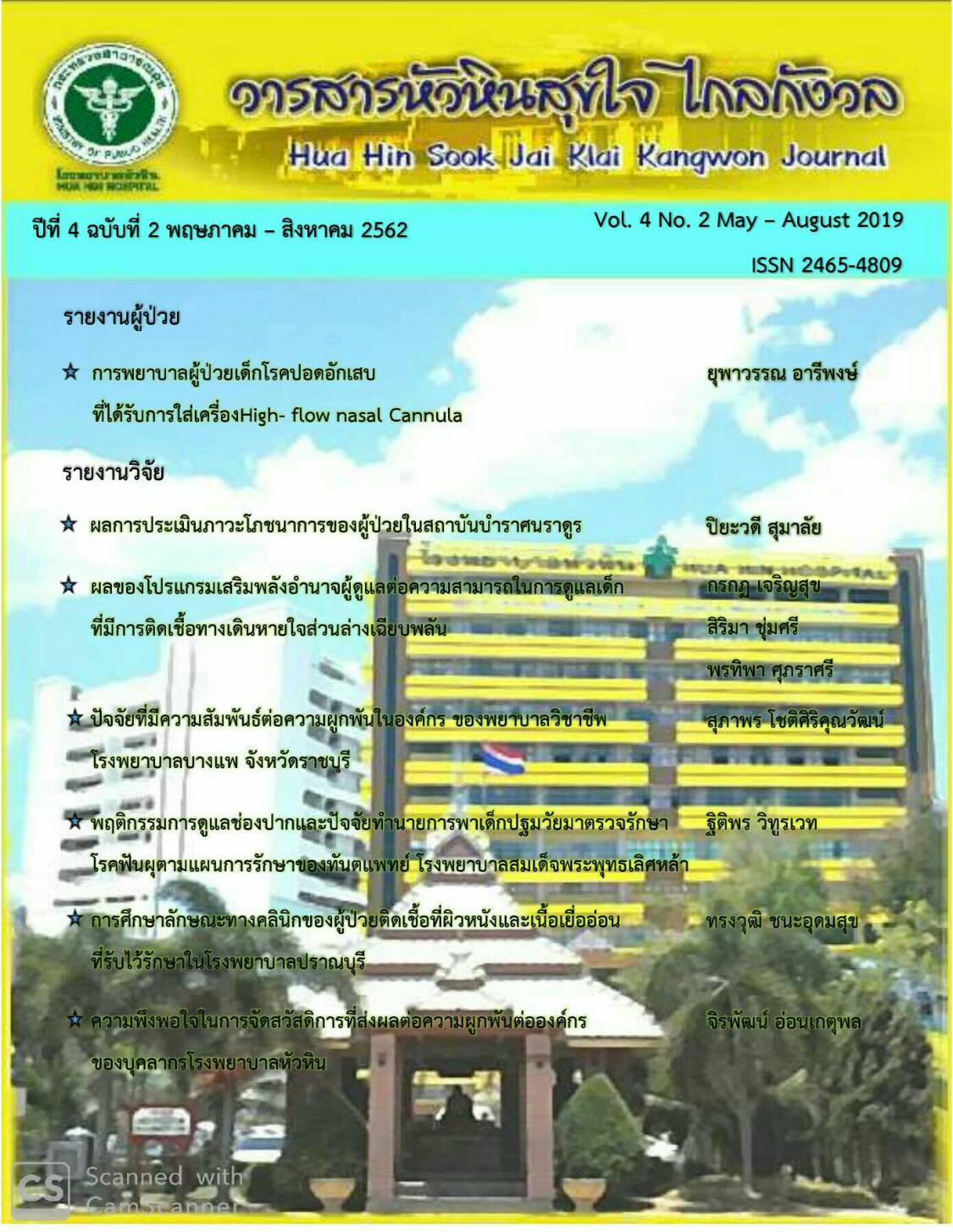Nursing care for children with Pneumonia that have been attached to a High - flow nasal cannula
Pneumonia In Child
Keywords:
Pneumonia, High-flow nasal cannulaAbstract
A patient with breathing difficulty may develop further complications such as respiratory failure which indicates mechanical ventilation support. Application of mechanical ventilation is necessary for the patient but carries several risks. High-flow nasal cannula (HFNC) is a type of high oxygen flow rate ventilation support that delivers heated and humidified gas through the nasal cannula. It reduces nasopharyngeal dead space therefore the patient receives continuous and sufficient oxygen concentration and has fewer rebreathing. HFNC also generates Positive End Expiratory Pressure (PEEP) which clears the airways and decreases the work of breathing that can result in breathing difficulty improvement.
This study depicts a nursing care case of a severe pneumonia infant with labored and rapid breathing (48 breaths per min). Subcostal retraction, intercostal retraction and left lung crepitation were found. The patient was treated by medication and high-flow nasal cannula ventilation support. The treatment and nursing care continued until there was clinical improvement; lower breathing rate (38-42 breaths per min), no retraction and little expiratory wheezing. As the result of appropriate treatment, infection prevention nursing care and appropriate self-care, childhood pneumonia can be successfully managed without complication and the patient can return to daily life.
References
ระบบหายใจในเด็ก : กลุ่มอาการโรคหวัดและปอดบวม. กรุงเทพฯ: 2554.
2. กระทรวงสาธารณสุข. สำนักระบาดวิทยา. สถิติสาธารณสุข. โรงพิมพ์องค์การสงเคราะห์ทหารผ่านศึก. กรุงเทพฯ. 2558.
3. โรงพยาบาลหัวหิน. กลุ่มงานยุทธศาสตร์และแผนงานโครงการ. รายงานสถิติประจำปี 2561.
4. ประพุทธ ศิริปุนย์, วันดี วราวิทย์ และสุรางค์ เจียมจรรยา, บรรณาธิการ. ตำรากุมารเวชศาสตร์ (ฉบับเรียบเรียงใหม่ เล่ม 1). กรุงเทพฯ: โฮลิสติกพับลิสชิ่ง; 2542.
5. อุดม บุญยทรรพ. สาระการเรียนรู้ : สรีรวิทยา Respiratory system. เชียงใหม่ : ภาควิชาสรีรวิทยา. คณะแพทย์ศาสตร์.
มหาวิทยาลัยเชียงใหม่; 2550.
6. วนพร อนันตเสรี. ปอดอักเสบ. ใน ประยงค์ เวชนิชสนอง และวนพร อนันตเสรี, บรรณาธิการ. กุมารเวชศาสตร์ทั่วไป. สงขลา: ชานเมืองการพิมพ์; 2550: 241-252.
7. จิตลัดดา ดีโรจนวงศ์, ดุสิต สถาวร, ธีรชัย ฉันทโรจน์ศิริ และอรุณวรรณ พฤทธิพันธุ์, บรรณาธิการ. Pediatric pulmonology
& Respiratory Care: A Current Practice. กรุงเทพฯ: บียอนด์ เอนเตอร์ไพรช์; 2544.
8. บัญจางค์ สุขเจริญ, วิไล เลิศเทวี, ฟองคา ติลกสกุลชัย, และศรีสมบูรณ์ มุสิกสุคนธ์, บรรณาธิการ. ตำราการพยาบาลเด็ก. กรุงเทพฯ: คณะพยาบาลศาสตร์. มหาวิทยาลัยมหิดล; 2550.
9. สมหญิง โควศวนนท์. ใน บัญจางค์ สุขเจริญ และคณะ, บรรณาธิการ. การพยาบาลเด็ก. กรุงเทพฯ: ภาควิชาการพยาบาลกุมารเวชศาสตร์. คณะพยาบาลศาสตร์. มหาวิทยาลัยมหิดล; 2550.
Downloads
Published
How to Cite
Issue
Section
License
บทความที่ได้รับการตีพิมพ์ในวารสารหัวหินเวชสาร เป็นลิขสิทธิ์ของโรงพยาบาลหัวหิน
บทความที่ลงพิมพ์ใน วารสารหัวหินเวชสาร ถือว่าเป็นความเห็นส่วนตัวของผู้เขียนคณะบรรณาธิการไม่จำเป็นต้องเห็นด้วย ผู้เขียนต้องรับผิดชอบต่อบทความของตนเอง







